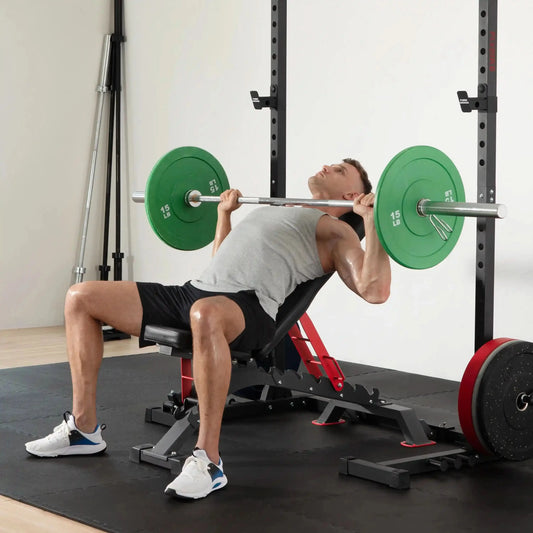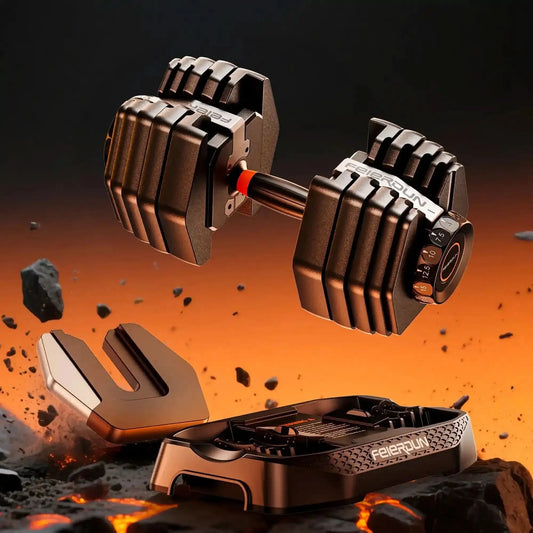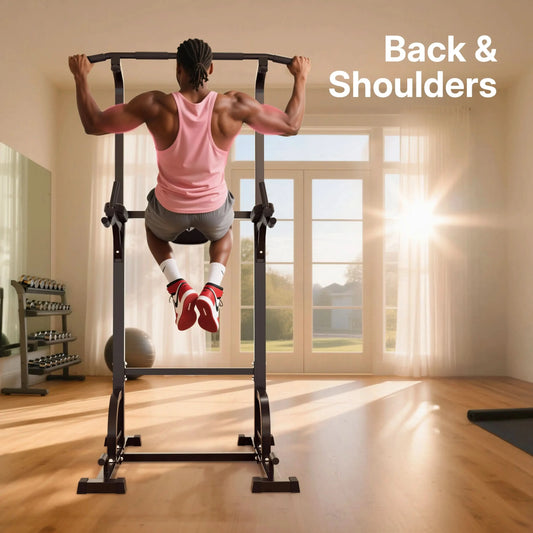Most gyms glorify max-out culture—“how heavy” you can go, but the story behind how you hold the bar is often left untold.
Your grip is the initial decision that determines the outcome of each rep. The science underlying it is straightforward but deep. When you slide your hands wider, the chest fibers take command, and your triceps become supporting players, but when you bring your hands in, your triceps seize the stage while your chest steps back.
This explains that every rep is not simply “a bench press,” but rather a dialogue between chest, arms, and shoulders.
In this article, my aim is to break down the mystery of bench press grips into clear, practical science, so that you can finally find the grip that feels built for your body.
What Is Bench Press Grip?
Bench Press Grip means two things at once: grip width and grip style. In simple words, it refers to the spacing between your hands, combined with the exact grip style you apply to stabilize the barbell.
It has more to do with the principles of physics, such as the route of the bar, the force, and the torque. Mechanically, grip width influences how far your elbows flare out or tuck in. It means that where you put your hands affects how your joints line up:
- If you move your hands wider, it will cause your elbows to bend more.
- A closer grip, on the other hand, will pull them tight to your ribs.
All of this has a direct effect on the bar path. According to
research, the width of your grip controls not only which muscles are called into action during heavy lifting, but also how long or short the bar path becomes.
Types of Bench Press Grip
Before you get into depth about each grip technique, it’s important to understand why grip matters in the first place.
Because it is more than just about your palms resting on a barbell. It is a full-body biomechanical decision. From your wrists to your shoulder, and then further into your ribcage and sternum, grip dictates everything.
We must deep dive into the types now, because only then can you see how small shifts in grip width completely alter chest and triceps activation.
1- Narrow / Close Grip
There’s no grip more deceptive in its simplicity than the Narrow Grip. Never mind its humble appearance; beneath the surface, this grip is a masterclass in elbow positioning, stability, and raw pressing power. A narrow grip typically means placing your hands slightly inside shoulder-width. This is the sweet spot that lets you feel the pressure deep in your triceps.
The best part is feeling every fiber of your arms and chest working in harmony as you press the barbell. The word “narrow” in narrow grip speaks for itself, as it embodies the principle that less is more.
This grip is all about training your nervous system to fire every tricep fiber in perfect sequence, synchronizing chest, shoulders, and arms for maximum force output.
2- Medium / Standard Grip
When you use the Medium Grip, your elbows naturally track in line with the bar. This results in a mechanically perfect press route that balances safety, efficiency, and full chest engagement.
What makes this grip extraordinary is that your joint health won’t be compromised. Here’s how: The
200% BAD (Biacromial distance) spacing will align your arms and shoulders in perfect harmony, allowing the pecs to fully engage. So, no unnecessary torque on the joints!
What’s even better is that you can focus entirely on technique and muscle engagement instead of compensating for awkward bar angles or flared elbows.
The grip just involves placing your hands roughly 1.5–2 times your biacromial distance apart. Essentially, this width positions your elbows and wrists in a natural line.
This simply means the chest takes the brunt of the work while your triceps and shoulders assist naturally.
3- Wide Grip
This grip teaches your muscles to fire in harmony with physics itself. A wide grip typically means setting your hands around 1.5 to 2 times shoulder-width apart. Spreading your hands apart redistributes the load away from your triceps and directly into your pecs.
The moment you set your elbows slightly out, torque will be redistributed. Hence, triceps get less load, and your chest will become the primary engine driving the press.
In fact,
EMG studies have shown that broader hand spacing transfers activation away from the triceps and towards the chest. This helps lifters maximize pec recruitment, ensuring every fiber—from
clavicular to sternocostal—is fully activated during the lift.
4- Pronated Grip
The safest grip one can rely on is Pronated, as it’s mechanically simple, stable, and intuitive, keeping the bar secure in your hands. This is the exact reason why lifters of all levels gravitate towards it.
It has, in fact, become the default for anyone serious about pressing safely and effectively. The grip mainly focuses on stability over flash, allowing the lifter to maintain perfect wrist alignment.
- The trick lies in starting with your hands evenly spaced on the bar.
- Securely lock the thumbs, then.
- Mind that elbows should track naturally along the torso.
- Lastly, make sure the bar is lowered enough to softly contact the mid-chest, allowing for a thorough stretch of the pectorals without overextending the shoulders.
5- Reverse Grip
Most lifters chase numbers. But when it comes to upper-pec development, adding more weight won’t guarantee that the clavicular fibers are fully engaged.
So, the thing that really matters is:
- Hand orientation
- Precise elbow placement
- Controlled bar path
Once you control the bar and guide it with intention, you’ll feel a contraction in the upper pecs that’s both intense and completely joint-friendly. Numbers won’t really excite your upper chest in the way mindful pressing does.
So, reverse grip is just a high-level hack for those who prioritize smart mechanics over ego-driven numbers. But even hacks work only when done right—combining intention with perfect positioning.
6- False / Thumbless Grip
The name itself evokes caution in any seasoned lifter’s mind, because it’s called ‘Suicide Grip’. With a single error or loss of focus, you may feel the bar sliding from your grasp.
This grip requires core focus and depends only on your grip strength and neuromuscular control. This clearly proves that lifting requires brains as well as physical strength.
All you have to start with is lighter weight to master proprioception, and practice slow, deliberate reps.
How Grip Width Affects Muscle Activation?
Grip Width dictates which muscles are nudged into action more. It is a subtle yet critical factor in programming bench variations.
- A narrow grip, for instance, brings your triceps to the frontline of the movement. This means there will be no stress on the outer chest fibers or shoulder joints.
- A standard grip, with a length of roughly 1.5× your shoulder width, gives you a neutral balance between strength and safety. The load is divided evenly. So, your chest, shoulders, and triceps stay equally engaged through every inch of the press.
- A wide grip is more like a power stretch for your chest muscles. With a length of around 2× your shoulder width, this grip puts your pecs in full command of the movement. Triceps won’t interfere much.
How to Find the Right Bench Press Grip Width for You (Step-by-Step)
Identifying your baseline grip is the most rational strategy for pushing securely. But it is mostly overlooked, thanks to the common obsession with lifting heavier weights rather than focusing on proper form.
There’s a myth that pressing heavier automatically equals better chest development. And this is the sole reason behind the alarming number of lifters who adopt dangerously wide or narrow grips.
The fact is pretty scary how they don’t know that blindly following heavier weights creates muscular imbalances and potentially painful overuse injuries.
So, let’s not fall into the trap of chasing numbers over technique and find the grip width that aligns with our anatomy.
Measure your Biacromial Distance (BAD)
There should be no compromise on accuracy, because the BAD is the foundation upon which all grip width recommendations are built.
Miscalculate 1 inch, and you might build strength in the wrong muscles. So, how to measure your Biacromial Distance (BAD)?
Just stand naturally, shoulders relaxed, and let a training partner locate those sharp little bony tips at the ends of your shoulders.
You need to take the acromion as the reference point, and then double-check by palpating the same spot two or three times.
Because you won’t want to discover mid-cycle that all your pressing strength is skewed toward triceps, just because of one small oversight.
Simply measure that straight line from one acromion to the other with a tape or string, because this single number will guide every grip choice you make.
Compute grip widths you can try
Use your index fingers and use them as living measuring sticks: from armpit to armpit equals your baseline, 1.5× that for standard, and 2× that for wide.
If that doesn’t seem accurate, use the knurl marks or smooth rings on the Olympic bar as anchors. Even if your gym has bars with slightly different knurling distances, you can still measure once with a tape and memorize your grip spot.
Try each grip with submaximal loads and assess
First of all, ask a spotter or training partner to watch your symmetry, because what feels “straight” can sometimes look crooked.
You can even record a quick video of each grip, since visual feedback often reveals things you can’t feel under the bar.
Man-to-Man Advice
Strength training is not about clinging to rigid formulas but about learning how your body interacts with iron across time. So, there’s no point in blindly chasing numbers on the bar when the real victory is mastering form, awareness, and patience. You cannot earn mastery overnight; strength is bought rep by rep.
Common Bench Press Grip Mistakes
The word ‘cool’ has become a dangerous excuse for ignoring fundamentals, since what looks flashy isn’t always what’s biomechanically safe. So:
- Don’t chase overly narrow or “cool” bar positions just for clout, because you’ll pay interest in the form of shoulder pain and stalled progress.
- Overly wide grips might look impressive in the mirror, but they crank your shoulder joints into extreme abduction. Not just that, but they’re the kind of shortcut that looks fine at 20, feels questionable at 30, and becomes a full-blown regret at 40.
- Excessive wrist extension can irritate the carpal tunnel area, all while slowly grinding down the cartilage and soft tissue. So, it’s better to aim for a “neutral knuckle” position—where your knuckles point up, not back.
Tips to Improve Your Bench Press Grip
To lift heavier while minimizing risk, there are a couple of fundamentals you can’t ignore, like:
- Keeping your wrists neutral
- Squeezing the bar as if you’re trying to crush it
- Aligning your elbows beneath the bar path
Moreover, you should always make sure your forearms stay vertical at the bottom of the press; otherwise, you’re just bleeding strength and straining joints.
Here are a few expert tips to lock your wrists, elbows, and shoulders into a chain of power that transfers energy efficiently into the bar:
- Keep the grip firm enough to generate irradiation (muscle activation spreading to nearby muscles). It will teach your nervous system to treat the bench press as a full-body lift, not just a chest exercise
- Don’t assume tighter always means better. Grip firmness should match the intent of your set.
- For hypertrophy-focused work, you want a grip that’s firm but not maximal.
- And for maximal strength sets, you’ll want to crush the bar as if you’re trying to leave fingerprints in the steel.
- If your hands tend to slip during heavy sets, you must be dealing with more than sweaty palms; you’re bleeding power. Friction holds the key to stability. So, do a tiny ritual before every heavy press, and use chalk and rubber sleeves to lock your grip into the bar firmly.
Equipment Considerations for Grip Training
From barbells to wrist wraps, one rule never changes: choose equipment that supports your body’s structure rather than forcing your joints into unnatural positions.
A hidden detail many miss is bar diameter; a thicker bar recruits more forearm strength, while a thinner bar favors control. Training bars with a double knurled design lock your palms into position without over-gripping. So, you must choose your training bar as intentionally as you choose your bench angle and grip width.
One last thing, never ignore the bench surface itself. From the 1° tilt in wrist angle to the 5° rotation of the shoulders, bench surface texture either enhances or compromises joint alignment.
Conclusion
Muscles and joints don’t just bend and extend; they only respond to biomechanics, physics, and recovery. The right bench press grip is the missing link that lets physics magnify muscle recruitment where you want it most while reducing destructive torque where you don’t.
There’s just a faint margin between being the lifter who trains decade after decade without setbacks and being the lifter who burns out before their prime.
It’s all up to you to bridge the margin with smart equipment choices.
Choose the right
barbell and
bench so that every centimeter you experiment with translates into years of safe, effective progress.
















